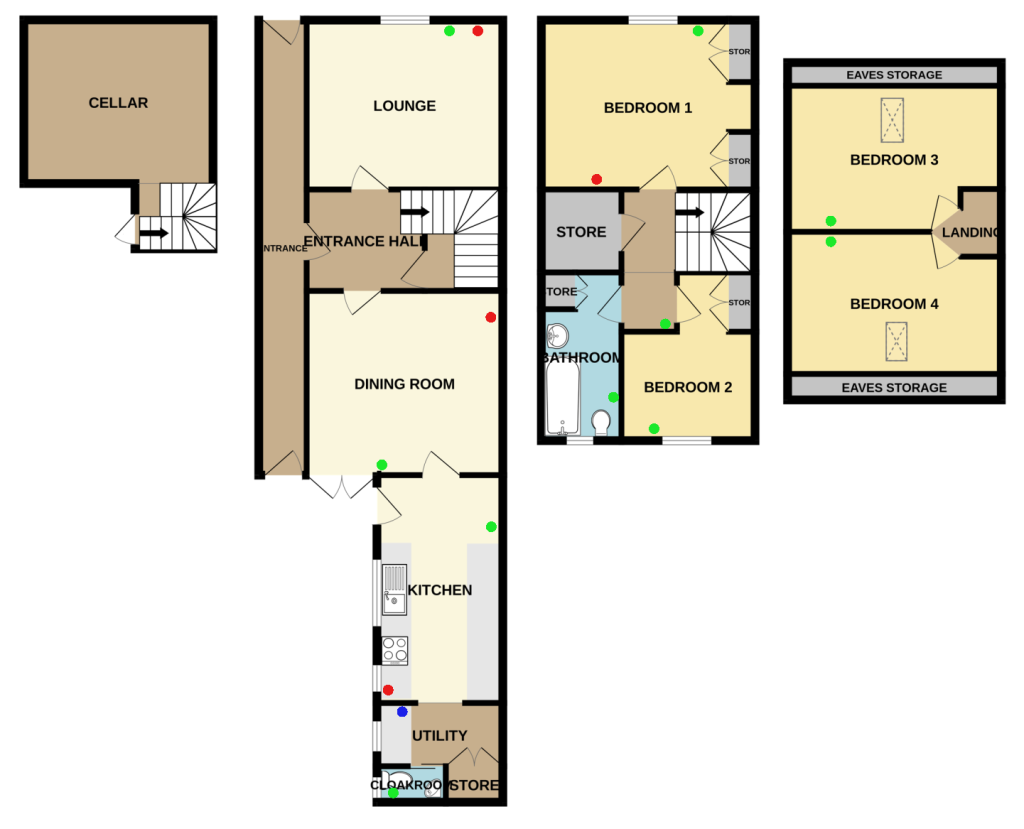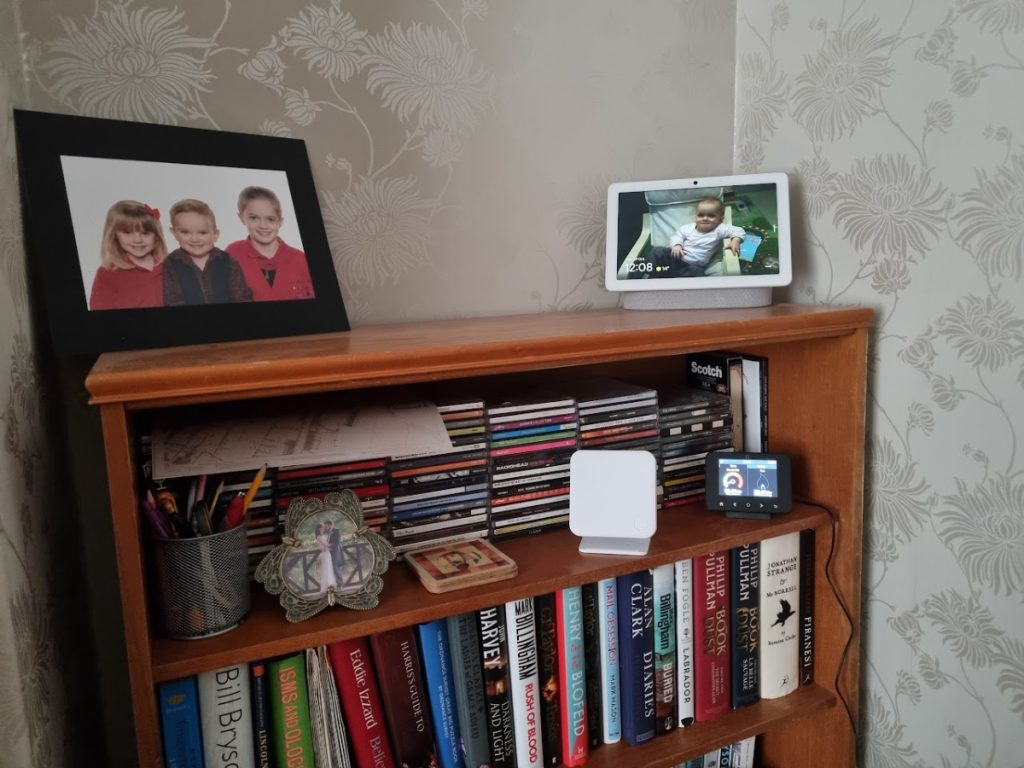Earlier this year we purchased our first house which finally meant I got control over the installation of our heating system. In the house already was a Draytek wireless solution, with a thermostat in the living room and a controller next to the combi boiler. If the living room was too cold, it would send a signal to turn the boiler on, and when it was too hot it would turn the boiler off. All the timings were programmed directly on the thermostat. Around the house we have a number of Thermostatic Radiator Valve (TRV).
My spec was that I should be able to control the thermostat via an app and my Google Home devices. It should allow for as many or as little variations in programming. And important for me, that my bedroom should be cool in the mornings, but comfortable in the evenings, as previously I’d need to remember to turn down the TRV as I went to bed, and remember to turn it up when I got up in the mornings.
So on Prime Day I purchased a tado Wireless Smart Thermostat Starter Kit which was in theory a direct replacement for the Draytek. Along with a single tado Smart Radiator Thermostat to see how well that would work and if we should invest in more around the house.
Now the first problem is installing a thermostat system in July, it’s pretty hard to test anything.
For installation you start with the Wireless Bridge, this is the device which sits in the middle of everything and connects to the internet. It needs to be connected via ethernet, powered via USB, and the recommendation is to set it up next to your home router. Unfortunately my 140 year old brick house has the router at the front window, the boiler at the back utility room and the range for the tado system isn’t great. So I went for a more middle ground and put the bridge next to one of my wifi mesh points in the dining room which has an ethernet port at the back.

The installation of the Wireless Receiver was pretty easy. I followed the steps in the app, telling it what boiler and old receiver I had, and it guided me through labelling the existing wires and how to connect them to the tado.
The thermostat is wireless so you just scan the QR code to set it up, configure the timings and dump it whichever room you want, for me this was the Lounge.
Finally I have to install the TVR. I removed the old Myson valve from the radiator in my bedroom (1 on the floor plan), and then need to work out which of the 10 extra fittings provided I need to attach together along with the correct length pin extension to use the tado. There was little help from the app in showing which one I needed, especially as the Myson TVR is one I’ve seen in a number of previous properties so it’s not as if it is uncommon. Also whilst everything seems to suggest that in horizontal mode the display should be facing upwards, every picture has it facing sidewards.
As the months pass and the temperature beings to drop, the heating is finally needed and here is where the problems appear.
The first is pretty basic, the thermostat in the living room is a white box with no always on display. You need to press the button on it to trigger the white LEDs to show the current temperature and for it to ask if you want to raise or lower it. An e-ink or LCD display like provided by everyone else, or a mains powered colour display could tell me at a glance if a) the room is too cold and b) if the boiler has been triggered to turn on. So instead I end up using the app.

The second is pretty serious. If the Wireless Controller can’t speak to the Wireless Bridge it will go in to a backup mode. This can be a) turn the heating on, b) turn the heating off, c) keep doing what it was already doing until told otherwise. By default it’s set to a), so when it started playing up, the heating was turned on at 2am in the morning burning through expensive gas. To change it to b) or c) you need to find a help guide online and press buttons on the controller. There is nothing within the app to change this behaviour.
So it turned out that having my bridge in the Dinning Room was too far for the controller, so I had to move my wifi mesh in the kitchen away from the utility room and closer to the dining room so that I had an ethernet port somewhere nearer the boiler, but not too far from the thermostat. This sort of fixed the connectivity issues, but has resulted in a weaker wifi signal in my garden. Also the bridge is now further away from the bedroom and that occasionally causes problems and drains the battery. Maybe I could throw more money at this solution and just buy a second bridge. Stick that in the bedroom and the front of the house will be covered, whilst the bridge in the kitchen can handle the boiler. But no, this system can only have one bridge.
The third issue was with the TVR in my bedroom. So I had it set up to be pretty much off all day, except between 8pm and 10pm where I wanted it to raise the bedroom temperature to 19c. It gets to the evening and whilst in the living room it’s feeling rather hot. So checking the app I can see that the living room is currently 21.5c (target is 20c), and the bedroom is 18c. So tado has turned the boiler on to warm up the bedroom and is heating the rest of the house. I go up to the bedroom, but the radiator is cold. For some reason the TVR has closed the valve as it’s nearly warm enough. If I set the temperature higher the valve is opened and the radiator beings to warm up, but again it closes before it reaches the target, whilst still telling the boiler to pump hot water around the house to every other room.
So yesterday I contact Amazon, who were kind enough to refund the TVR and I’m back to manually tweaking the Myson in the bedroom to find the right temperature. I’m still on the fence about the Wireless Thermostat and Receiver
I live in a bungalow so it seems a bit easier, we have a Hive boiler thermostat control unit and just normal thermostatic radiator valves (6). The only thing connected to the internet is the hive controller.
The way we set it all up is to crank all the thermostatic valves fully open on the radiators and set the hive controller at a set temperature (say 20 degrees). I then turned down the individual thermostatic radiator valves in each room to a comfortable temperature.
The Hive thermostat/controller (in the hall) can be set for different temperatures for different times of the day, so overnight the setting drops to 17 degrees and rises according to when we are in.
It took a few days to get it right if I am honest.